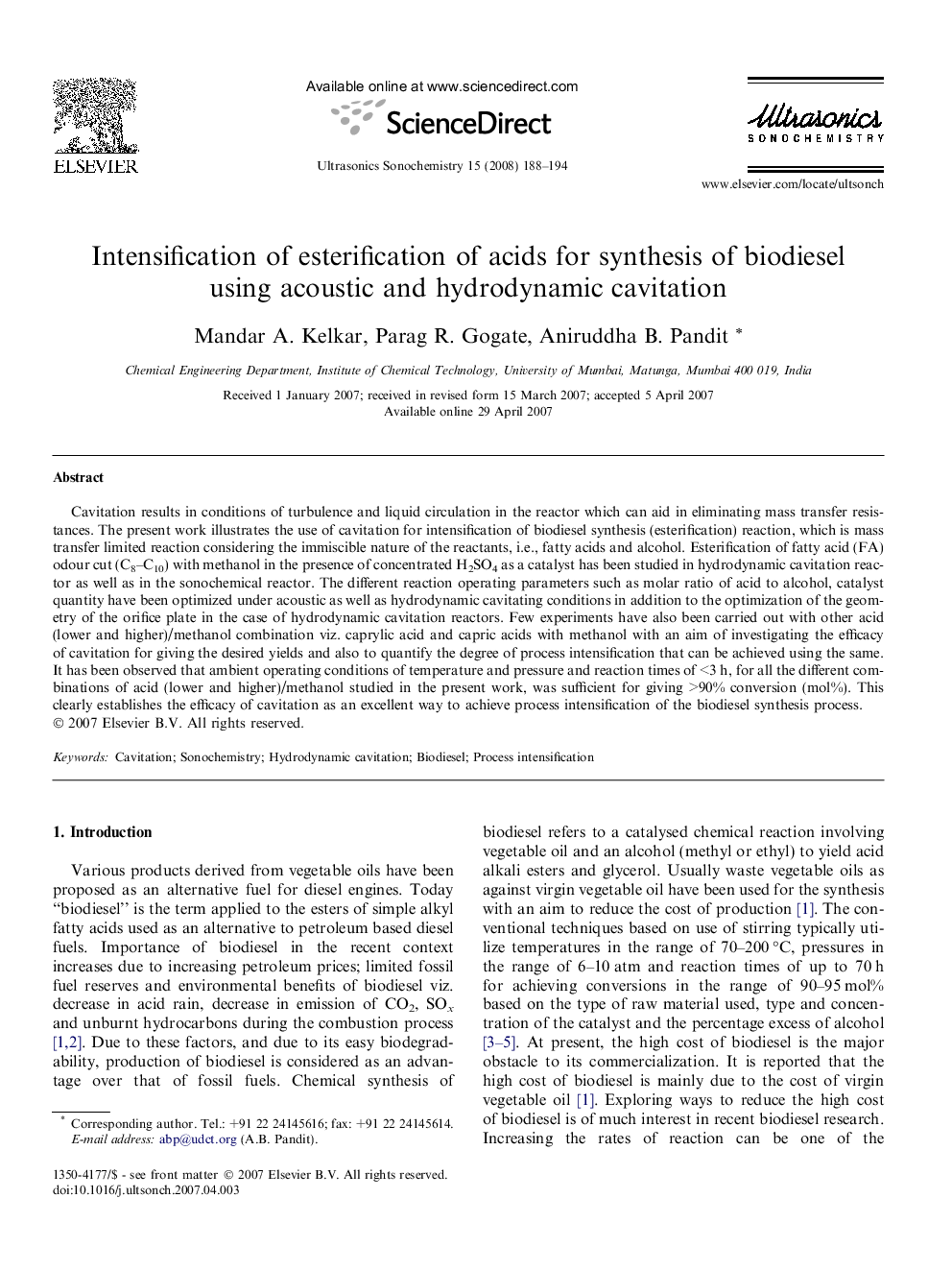| Article ID | Journal | Published Year | Pages | File Type |
|---|---|---|---|---|
| 1269980 | Ultrasonics Sonochemistry | 2008 | 7 Pages |
Cavitation results in conditions of turbulence and liquid circulation in the reactor which can aid in eliminating mass transfer resistances. The present work illustrates the use of cavitation for intensification of biodiesel synthesis (esterification) reaction, which is mass transfer limited reaction considering the immiscible nature of the reactants, i.e., fatty acids and alcohol. Esterification of fatty acid (FA) odour cut (C8–C10) with methanol in the presence of concentrated H2SO4 as a catalyst has been studied in hydrodynamic cavitation reactor as well as in the sonochemical reactor. The different reaction operating parameters such as molar ratio of acid to alcohol, catalyst quantity have been optimized under acoustic as well as hydrodynamic cavitating conditions in addition to the optimization of the geometry of the orifice plate in the case of hydrodynamic cavitation reactors. Few experiments have also been carried out with other acid (lower and higher)/methanol combination viz. caprylic acid and capric acids with methanol with an aim of investigating the efficacy of cavitation for giving the desired yields and also to quantify the degree of process intensification that can be achieved using the same. It has been observed that ambient operating conditions of temperature and pressure and reaction times of <3 h, for all the different combinations of acid (lower and higher)/methanol studied in the present work, was sufficient for giving >90% conversion (mol%). This clearly establishes the efficacy of cavitation as an excellent way to achieve process intensification of the biodiesel synthesis process.
